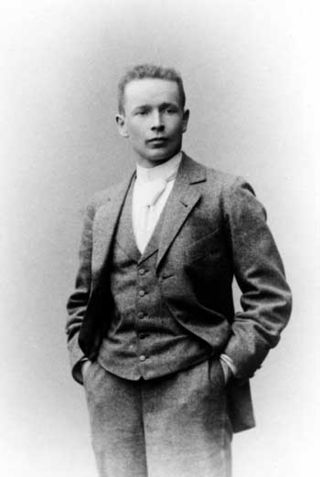
Gottlieb Eliel Saarinen was a Finnish-American architect known for his work with art nouveau buildings in the early years of the 20th century. He was also the father of famed architect Eero Saarinen.
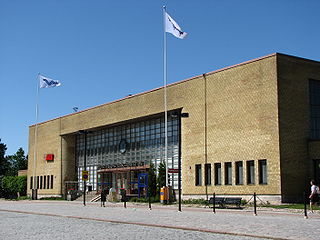
Turku Central Station is a railway station in the VII District of Turku, Finland. It has VR services to Helsinki and towards Joensuu. The station serves approximately a million passengers annually.
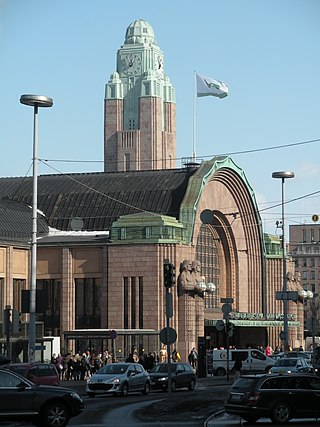
Helsinki Central Station (HEC) is the main station for commuter rail and long-distance trains departing from Helsinki, Finland. The station is used by approximately 400,000 people per day, of whom about 200,000 are passengers. It serves as the terminus for all trains in the Helsinki commuter rail network, as well as for all Helsinki-bound long-distance trains in Finland. The Rautatientori metro station is located in the same building.

Pasila station is a railway station in Helsinki, Finland, approximately 3.5 kilometres (2.2 mi) north of Helsinki Central. It is the second busiest railway station in Finland, after Helsinki Central, and takes up a large part of the district of Pasila. The station was first opened in 1862 along the Finnish Main Line. The current station building opened in 2019.
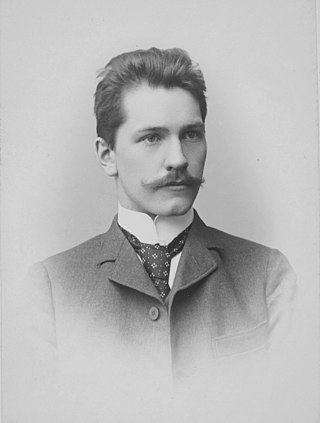
Uno Werner Ullberg was a famous Finnish architect.

Tampere Central Station is a functionalist building in Tampere, Finland, designed by Eero Seppälä and Otto Flodin, completed in 1936. The station is one of the most important railway stations in Finland. In 2015, the Tampere Central Station was the second busiest railway station in Finland in terms of numbers of passengers, after the Helsinki Central Station.

Leppävaara station is a railway station located in Leppävaara, a district of the city of Espoo in Finland. It is located about 11 kilometres (7 mi) to the northwest of Helsinki Central.
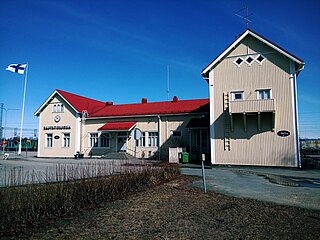
Kemi railway station is located in the town of Kemi in the Lapland Region of Finland. It is operated by VR. The distance to the Helsinki Central railway station, via Haapamäki and Oulu stations is 858.3 kilometres.

The Lahti railway station is located in the city of Lahti in Finland.

The Kouvola railway station is located in the city of Kouvola in Finland.

Kupittaa railway station is located in the Kupittaa district of Turku, Finland. The station is located about three kilometres from the Turku Central railway station in the immediate vicinity of the Turku Science Park. All trains between Helsinki and Turku stop at Kupittaa. However, due to construction work between here and Turku, Kupittaa is the terminus of the min from Helsinki from August 2022 until the end of 2024. Signalling is handled from Turku Central railway station. The station has bus connections to Föli lines 32, 42, 58 and 110.

Vyborg is a railway station, located in the town of Vyborg in Leningrad Oblast, Russia.

Lappeenranta Central Station is a train station located in the city of Lappeenranta in Finland. The station is served by traffic to Helsinki and Joensuu.

The old Karelian railroad between Viipuri and Joensuu was a 1,524 mm broad gauge line that used to link Joensuu, Sortavala, Hiitola, Antrea and Viipuri. Originally built in 1892-1894 by Finnish State Railways in the Grand Duchy of Finland, in the 1940s most of the railway up to Niirala was ceded by Finland to the Soviet Union in the Moscow Peace Treaty, Moscow Armistice and Paris Peace Treaty as a result of the Winter War and Continuation War. Now the track is located in Leningrad Oblast, Republic of Karelia and North Karelia. The Sortavala–Joensuu link across the border was abolished after the Continuation War, but was since restored and is currently in use for cargo traffic.
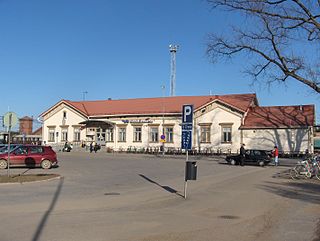
Joensuu railway station is located in Joensuu, North Karelia, Finland. The station was opened in 1894.

The Riihimäki–Saint Petersburg railway is a 385-kilometre (239 mi) long segment of the Helsinki–Saint Petersburg connection, which is divided between Saint Petersburg and Leningrad Oblast in Russia and the province of Southern Finland in Finland.

Vyborg is a town and the administrative center of Vyborgsky District in Leningrad Oblast, Russia. It lies on the Karelian Isthmus near the head of Vyborg Bay, 130 km northwest of St. Petersburg, 245 km east of the Finnish capital Helsinki, and 38 km south of Russia's border with Finland, where the Saimaa Canal enters the Gulf of Finland. The most recent census population of Vyborg is 72,530 (2021 Census).

Armas Eliel Lindgren was Finnish architect, professor and painter.

Herman Ernst Henrik Gesellius was a Finnish architect.

Lyhdynkantajat is a group of sculptures at the front door of the Helsinki Central Station in Helsinki, Finland. The sculptures were designed by Emil Wikström and completed in 1914. Lyhdynkantajat is part of the facade of the Art Nouveau station designed by Eliel Saarinen.



























